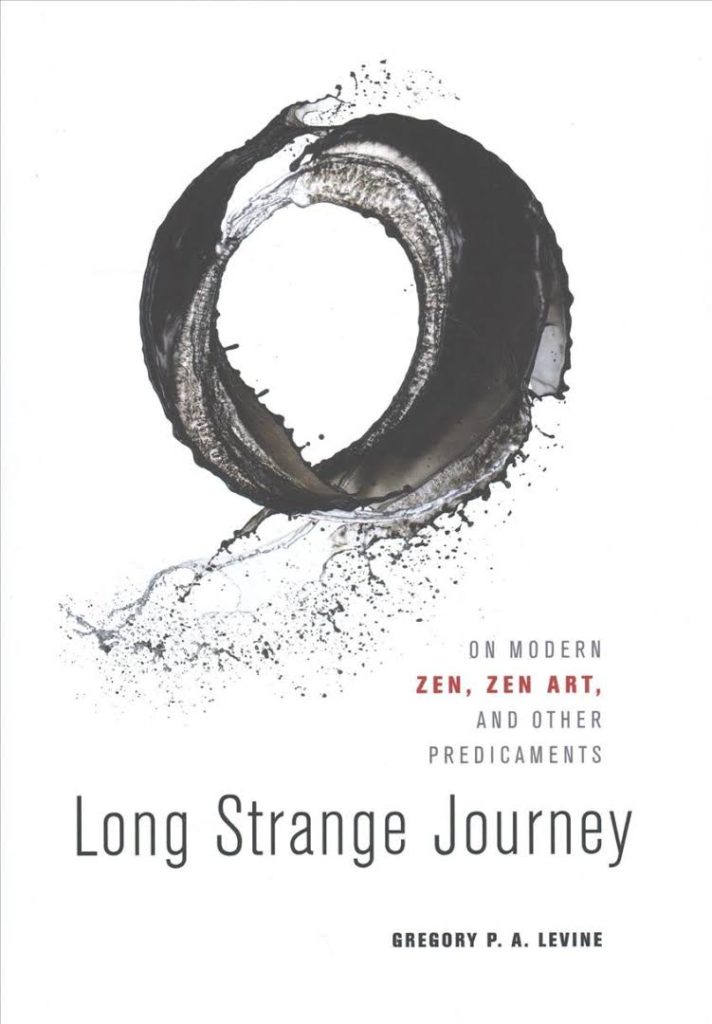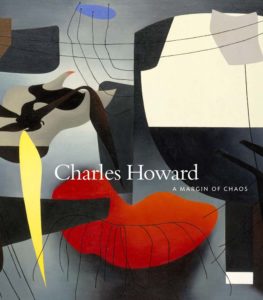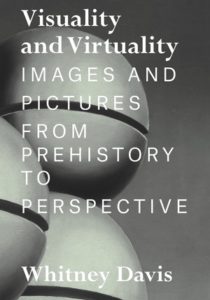Tag: faculty publications
New Book from Professor Gregory Levine: “Long Strange Journey: On Modern Zen, Zen Art, and Other Predicaments”
Congratulations to History of Art Department Professor Gregory Levine on his new publication, Long Strange Journey: On Modern Zen, Zen Art, and Other Predicaments, with the University of Hawaii Press.

ISBN: 9780824858056
From the publisher website:
“Long Strange Journey presents the first critical analysis of visual objects and discourses that animate Zen art modernism and its legacies, with particular emphasis on the postwar “Zen boom.” Since the late nineteenth century, Zen and Zen art have emerged as globally familiar terms associated with a spectrum of practices, beliefs, works of visual art, aesthetic concepts, commercial products, and modes of self-fashioning. They have also been at the center of fiery public disputes that have erupted along national, denominational, racial-ethnic, class, and intellectual lines. Neither stable nor strictly a matter of euphoric religious or intercultural exchange, Zen and Zen art are best approached as productive predicaments in the study of religion, spirituality, art, and consumer culture, especially within the frame of Buddhist modernism.
Long Strange Journey’s modern-contemporary emphasis sets it off from most writing on Zen art, which focuses on masterworks by premodern Chinese and Japanese artists, gushes over “timeless” visual qualities as indicative of metaphysical states, or promotes with ahistorical, trend-spotting flair Zen art’s design appeal and therapeutic values. In contrast, the present work plots a methodological through line distinguished by “discourse analysis,” moving from the first contacts between Europe and Japanese Zen in the sixteenth century to late nineteenth–early twentieth-century transnational exchanges driven by Japanese Buddhists and intellectuals and the formation of a Zen art canon; to postwar Zen transformations of practice and avant-garde expressions; to popular embodiments of our “Zenny zeitgeist,” such as Zen cartoons. The book presents an alternative history of modern-contemporary Zen and Zen art that emphasizes their unruly and polythetic-prototypical natures, taking into consideration serious religious practice and spiritual and creative discovery as well as conflicts over Zen’s value amid the convolutions of global modernity, squabbles over authenticity, resistance against the notion of “Zen influence,” and competing claims to speak for Zen art made by monastics, lay advocates, artists, and others.”
New Book from Art History Faculty Member, Lisa Trever
Assistant Professor Lisa Trever in the History of Art department has published The Archaeology of Mural Painting at Pañamarca, Peru, with Harvard University Press as part of the Dumbarton Oaks Pre-Columbian Art and Archaeology Studies Series.

From the publisher website:
The archaeological site of Pañamarca was once a vibrant center of religious performance and artistic practice within the ancient Moche world. During the seventh and eighth centuries CE, architects and mural painters created lofty temples and broad-walled plazas that were brilliantly arrayed with images of mythological heroes, monstrous creatures, winged warriors in combat, ritual processions, and sacrificial offerings.
This richly illustrated volume offers a nuanced account of the modern history of exploration, archaeology, and image making at Pañamarca; it also offers detailed documentation of the new fieldwork carried out by the authors at the site. That fieldwork led to the discoveries of 1,200-year-old mural paintings, presented here in detail for the first time. Created in a cultural context a thousand years before the use of written scripts, the art and architecture of Pañamarca cannot be studied via ancient histories or commentaries, but only through layers of physical evidence from archaeological excavations and documentation. This volume will serve as a definitive reference work on mural painting at Pañamarca, as well as a new primary resource for Pre-Columbian studies and for studies in global ancient art, architecture, and archaeology more broadly.
On exhibit at BAMPFA, “Charles Howard: A Margin of Chaos”
The Art History/Classics Library recently acquired an exhibition catalog from an exhibit currently up at the Berkeley Art Museum until October 1, 2017, Charles Howard: A Margin of Chaos.
The catalog features contributions from UC Berkeley History of Art Professor Lauren Kroiz, BAM Curator Apsara DiQuinzio, and Curatorial Assistant, Valerie Moon.

From the publisher website:
“Charles Howard: A Margin of Chaos accompanies the first museum exhibition dedicated to American artist Charles Houghton Howard (1899–1978) since 1956. Howard, part of a circle of artists that included Alexander Calder, Gordon Onslow Ford, Grant Wood and Ben Nicholson, had an active and distinguished career in midcentury America and England. His enigmatic, meticulous paintings, often intimate in scale, bridge figurative, Surrealist and abstract currents in modern art. Though his work evolved over his career, Howard said that all of his pictures “are closely related … They are in fact all portraits of the same general subject, of the same idea, carried as far as I am able at the time.” The first scholarly publication on Howard, this fully illustrated volume includes essays by Apsara DiQuinzio, Robert Gober and Lauren Kroiz, a reprint of one of Howard’s own essays from 1946, an illustrated chronology and exhibition history.”
New Publication Co-Authored by Professor Julia Bryan-Wilson
UC Berkeley Professor, Julia Bryan-Wilson, contributes to a new publication: Cecilia Vicuña: About to Happen. About to Happen, accompanies an exhibition which will travel to the Berkeley Art Museum in 2018-2019.

ISBN: 978-1938221156
From the publisher website, Siglio Press:
Beginning and ending at the edge of the ocean at the sacred mouth of the Aconcagua River, About to Happen serves as a lament as well as love letter to the sea. In this artist’s book, Chilean-born artist and poet Cecilia Vicuña weaves personal and ancestral memory while summoning the collective power to confront the economic disparities and environmental crises of the 21st century.
Collecting the detritus that washes up on shore, Vicuña assembles out of the refuse tiny precarios and basuritas—little sculptures held together with nothing more than string and wire, which she sometimes makes as offerings to be reclaimed by the sea. These acts of creation and erasure mirror the ways in which her work inhabits and enlivens the liminal spaces between the remembered and forgotten, the revered and the discarded, the material and the dematerialized.
About to Happen, which accompanies an exhibition at the Contemporary Arts Center, New Orleans, traces a decades-long practice that has refused categorical distinctions and thrived within the confluences of conceptual art, land art, feminist art, performance and poetry. Vicuña’s nuanced visual poetics—operating fluidly between concept and craft, text and textile—transforms the discarded into the elemental, paying acute attention to the displaced, the marginalized and the forgotten.
Forthcoming Publication from Professor Whitney Davis
Whitney Davis (George C. and Helen N. Pardee Professor of History and Theory of Ancient and Modern Art at UC Berkeley), is publishing Visuality and Virtuality: Images and Pictures from Prehistory to Perspective with Princeton University Press, forthcoming, November 2017 (ISBN: 9780691171944).

From the Princeton University Press website:
“This book builds on the groundbreaking theoretical framework established in Whitney Davis’s acclaimed previous book, A General Theory of Visual Culture, in which he shows how certain culturally constituted aspects of artifacts and pictures are visible to informed viewers. Here, Davis uses revealing archaeological and historical case studies to further develop his theory, presenting an exacting new account of the interaction that occurs when a viewer looks at a picture.
A profound new theory of the work of both makers and viewers by one of the discipline’s most esteemed and engaged thinkers, Visuality and Virtuality is essential reading for art historians, architects, archaeologists, and philosophers of art and visual theory.”